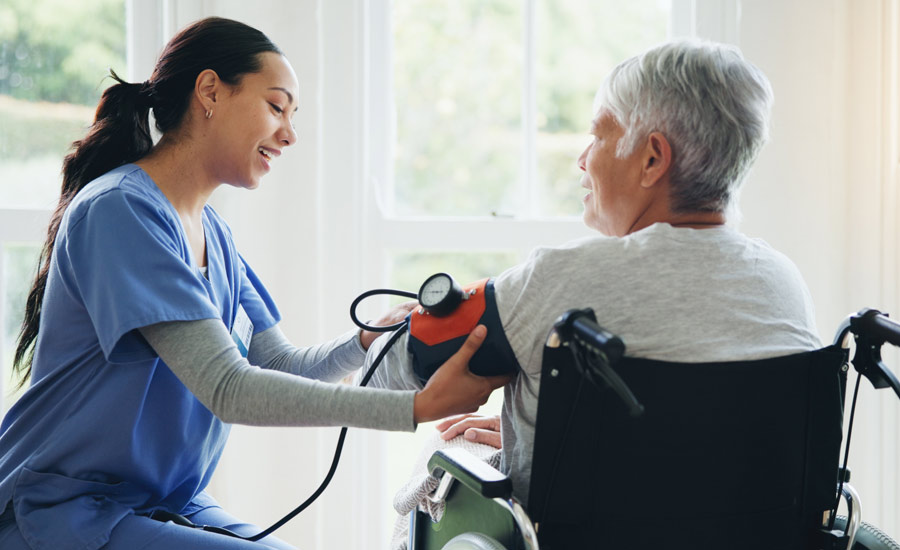How Care Homes Support Residents with Chronic Illnesses

As we age, living with a long-term condition like diabetes, heart disease and dementia becomes more challenging, especially when moving into a care home. That’s why it’s so important for families to look for care homes that offer the correct, reliable support for their loved ones.
This article explores how care homes support residents living with chronic conditions. We’ll examine the systems in place to monitor health, the roles of care staff and healthcare professionals and the tools that help identify problems early.
How are Chronic Diseases Monitored in Care Homes?
In care homes, chronic illnesses are kept on top of with a mix of routine checks, daily observation and professional input. For instance, staff keep an eye on things like blood pressure, blood sugars and oxygen levels, while making sure medication is taken safely. Any changes are then logged and shared with doctors or nurses so the resident’s care plan can be adjusted quickly.
Common Chronic Conditions in Care Homes
Here is a list of the main chronic conditions of care home residents and what they need to stay under control:
- Diabetes – regular blood sugar checks, safe medication or insulin management and attention to diet.
- Heart disease – monitoring blood pressure, heart rate, weight and signs of fluid retention.
- Chronic respiratory illnesses like COPD or asthma – checking oxygen levels, spotting changes in breathing and supporting with inhalers or oxygen therapy.
- Arthritis and mobility issues – observing movement, pain levels and helping with safe mobility.
- Dementia and Alzheimer’s disease – tracking behaviour, mood, nutrition and sleep patterns alongside medical needs.
- Kidney disease – watching fluid balance, weight and blood test results shared by healthcare teams.
The Day-to-Day Monitoring Residents Can Expect
The way care homes monitor residents with chronic illnesses is naturally integrated into daily routines and supported by clear systems.
Here’s how it works in practice:
Routine health checks
Residents undergo regular checks for vital signs, including blood pressure, weight, hydration and mobility. Using these simple measures can flag up problems early, for example, sudden weight changes might point to heart or kidney issues.
Medication management
Most people living in care homes with chronic diseases take several medications. So care home staff must follow strict schedules and double-check doses to make sure nothing is missed or duplicated, which can be dangerous. Medications are reviewed with doctors and pharmacists to keep treatments up to date and avoid side effects.
Monitoring equipment
Depending on the condition, carers will use tech such as blood glucose monitors, oxygen saturation meters or digital blood pressure cuffs. These readings are logged and compared over time, so trends are spotted rather than just single results.
Daily observation
Sometimes the biggest clues come from everyday changes where staff will notice if a resident is feeling more tired, eating less than usual or seems short of breath. If they notice any changes, they are taken seriously and quickly passed on to senior staff or healthcare professionals if needed.
Digital record-keeping
Most care homes now use electronic systems to record health data, making it easier to track patterns, share information with medical staff and ensure nothing is overlooked.
Professional Oversight
When it comes to managing chronic conditions, residents are supported by a wider healthcare team and that professional oversight makes a big difference.
Most residents are registered with a local GP who carries out regular reviews for the care home. They respond when staff flag concerns and update treatment plans as needed, and, depending on the home, nurses might be based on site or visit regularly. GPs and nurses handle more complex care such as wound management, insulin injections or monitoring heart and lung conditions, ensuring residents are feeling well and receive medical attention quickly.
Specialist support is also brought in when required. For example, a diabetes nurse might advise on blood sugar control, a physiotherapist helps with mobility issues and memory services can assist residents with dementia. All of this input is tied together through regular care plan reviews that involve healthcare professionals, the home’s care team and often the residents’ family, making sure care remains suitable, safe and matches the resident’s needs.
With healthcare professionals involved at every stage, it reassures families that their loved ones benefit from medical expertise when it matters most.
Care Home Technology and Innovation for Chronic Illness
Technology is becoming more common in care homes, but it’s used to support staff rather than replace them. It gives trained carers an easier way to monitor health and notice when something’s not quite right.
Some homes are trialling remote monitoring systems that send data directly to healthcare teams, so issues can be picked up even before a GP visit. Telehealth is also making specialist support quicker to access, reducing the need for stressful hospital trips.
Some newer tools are condition-specific. For example, digital inhaler sensors can log usage for residents with asthma or COPD, while smart pill dispensers help ensure complex medication routines are followed correctly. It’s these kinds of innovations that directly support monitoring by giving staff accurate, real-time information about how a condition is being managed.
Care Home Health Monitoring Matters
Chronic illnesses can’t be left to chance.
Thanks to regular checks, professional input and the right tools, changes are noticed faster and acted on immediately. For residents, that brings safer, more consistent care, and for families, the reassurance that their loved one’s health is in good hands.
Ready to explore...
